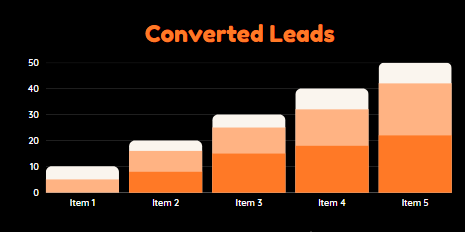Returning Customers vs Leads

Both returning customers and generating more leads are important for the growth of a business, but they serve different purposes.
Returning customers are generally more valuable to a business than new leads because they have already established a relationship with the business and are more likely to make repeat purchases. Additionally, returning customers tend to spend more money than new customers because they are already familiar with the products or services and trust the brand.
On the other hand, generating more leads is important for expanding a business’s customer base and increasing brand awareness. Leads represent potential customers who have shown some level of interest in the business, but may not have yet made a purchase. The more leads a business has, the greater the opportunity for sales growth.
In summary, both returning customers and generating more leads are important for the success of a business. It’s important to strike a balance between retaining existing customers and attracting new ones to achieve sustainable growth.

How to Keep Returning Customers
Keeping returning customers is crucial for the long-term success of a business. Here are some tips on how to maintain good relationships with your customers and encourage them to come back:
- Provide excellent customer service: Make sure your customer service is top-notch. Respond promptly to inquiries, be friendly and helpful, and resolve issues quickly.
- Offer loyalty rewards: Consider implementing a loyalty program that rewards customers for their repeat business. This can include discounts, free products or services, or exclusive offers.
- Personalize your communication: Use customer data to personalize your communication with returning customers. Address them by name, send personalized recommendations based on their past purchases, and send targeted promotions that align with their interests.
- Stay in touch: Keep in touch with customers through regular email newsletters, social media updates, or other forms of communication. This can help keep your brand top of mind and remind customers why they love your business.
- Continuously improve your products and services: Continuously listen to feedback from your customers and use it to improve your products and services. By showing that you are committed to delivering the best possible experience, you can build trust and loyalty with returning customers.
By implementing these strategies, you can create a positive customer experience that keeps customers coming back for more.

Getting Reliable Leads
Getting reliable leads is crucial for the success of a business. Here are some tips on how to generate quality leads:
- Define your target audience: Determine who your ideal customer is and focus your marketing efforts on reaching them. This will ensure that the leads you generate are more likely to convert into customers.
- Create quality content: Develop content that is informative, engaging, and relevant to your target audience. This can include blog posts, e-books, whitepapers, or videos. Make sure to optimize your content for search engines to attract more leads.
- Use social media: Social media platforms are great for connecting with potential customers. Use social media to share your content, engage with followers, and participate in relevant conversations.
- Attend industry events: Attend trade shows, conferences, and other industry events to network with potential customers. This is a great opportunity to build relationships and generate new leads.
- Use lead generation tools: Consider using lead generation tools like landing pages, webinars, or quizzes to capture contact information from potential customers. This can help you build a database of high-quality leads to nurture over time.
- Provide value: Offer something of value to potential customers in exchange for their contact information. This can include a free trial, a sample, or a consultation.
By implementing these strategies, you can generate reliable leads that are more likely to convert into customers. It’s important to measure your lead generation efforts regularly to identify what’s working and what’s not, and adjust your strategy accordingly.

